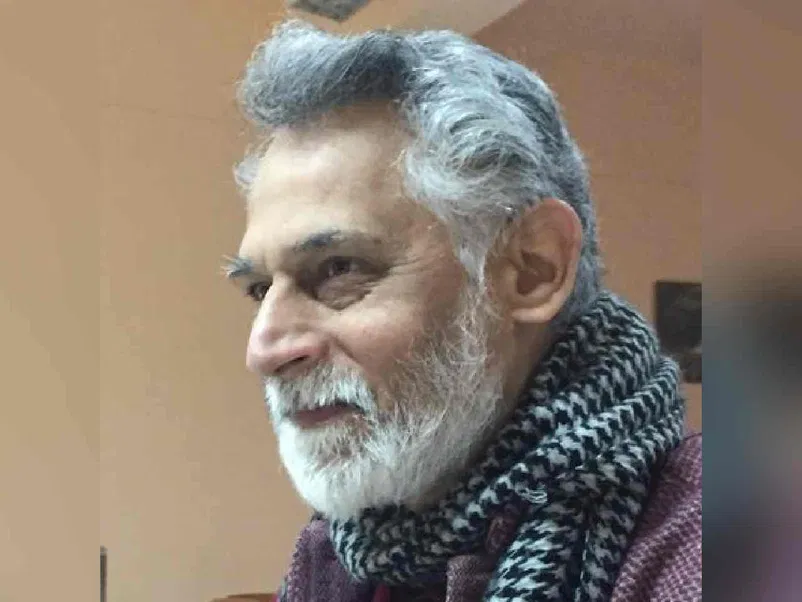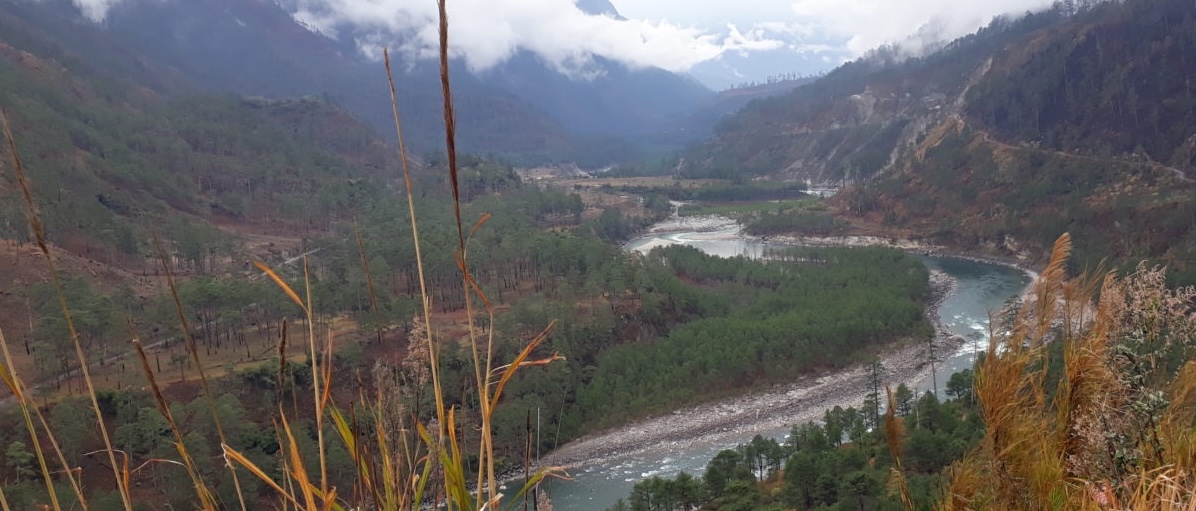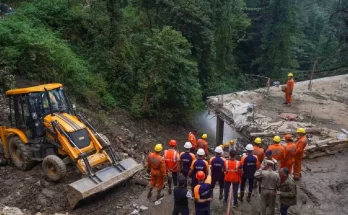He was a tireless environmentalist, glue of the water protection movement, say admirers.

File picture of Manoj Misra. (Credit: News9 Plus)
New Delih: “Once a forester, now a river student.”
These six words, as his Twitter bio for many years, aptly summed up the journey of Manoj Kumar Misra from an Indian Forest Service (IFS) officer to a lifelong lover of rivers, with his muse being the Yamuna.
Rightly so, Misra, who breathed his last breath in Bhopal on Sunday, June 4, after fighting a tough battle against Covid-19, was known more as the convenor of Yamuna Jiye Abhiyaan (YJA) – a campaign for the conservation of Yamuna and the preservation of its floodplains – since 2007, overshadowing his other achievements. He was 68.
The National Green Tribunal (NGT) order on Misra’s petition was possibly one of the most significant achievements, establishing the necessity of considering the river in its entirety, including the floodplains, and outlining a time-bound plan for the rejuvenation of Yamuna in the famous ‘Maily se nirmal Yamuna’ campaign.
Rather than resting on the laurels of the 2015 NGT judgment, he diligently pursued its implementation. Even on March 16 this year, he sent a letter to the Lieutenant Governor of Delhi stating: “Unfortunately, the Yamuna in Delhi is presently sick to its core, and hence, unless it is first rejuvenated and restored to its full glory, any effort to artificially attract people to its banks will be meaningless.”
During his days with YJA, Misra travelled the entire length of the Yamuna. His colleague at the time, Bhim Singh Rawat, recalled how Misra had “so much clarity of thought… right from the start, he had a long-term planning vision” and added, “Being with him, especially during field trips, was always a precious learning experience.”
Working with the people on the banks of the Yamuna was not easy, but Misra had a knack for connecting people with the river. Misra would come fully prepared, equipped with maps and topographical sheets, but when he was at the Yamuna bank, he would engage with people, listen to them, and learn about their area and their connection with the river.
Beyond Delhi, the Yamuna Jiye Abhiyaan had formed the Yamuna Mitra Mandali, a network of community members along the river, and fought to keep the floodplains free from massive infrastructure projects such as the Akshardham Temple, Commonwealth Games Village, and the Millennium Depot.
The PEACE Institute, along with UNDP and the UK’s Thames River Trust, had undertaken a project to build a ‘People’s River Health Index.’ Interestingly, former Environment Minister Anil Madhav Dave had borrowed the idea, improved it, and used it for his organization, Narmada Samagra, along the Narmada River in Madhya Pradesh.
Another former Environment Minister, Jairam Ramesh, described him as an “indefatigable environmentalist” and said in a tweet, “He (Misra) had helped me in drafting the first set of rules for the River Regulation Zone, much along the lines of the Coastal Regulation Zone rules.”
Misra had shifted to Bhopal for the last few years but regularly travelled to Delhi for work. Previously, Misra had joined the IFS in 1982 in the Madhya Pradesh cadre. He had spent a stint in Delhi as the Director of TRAFFIC, an agency working on illegal wildlife trade, and had received training in Wildlife Management at the Wildlife Institute of India in Dehradun in 1984.
He was posted to Chhattisgarh when he took VRS in 2001. He came to Delhi to start an NGO called the PEACE Institute Charitable Trust, which embarked on the Yamuna Jiye Abhiyaan.
A wildlife trade expert who worked with him during his TRAFFIC days said, “Misra helmed the TRAFFIC India office for several years, vigilant in his efforts to combat wildlife trafficking and shed light on various important trade dynamics, including fisheries and medicinal plants.
He was, of course, a forester at heart, bringing his training and discipline into the NGO arena. But he was also a great humanist and worked exceptionally well with people from diverse backgrounds and expertise to achieve impact and results, including at the regional level in South Asia. It is not often that one encounters someone of his integrity and sincerity.”
Dr Rajesh Gopal, former member secretary of the National Tiger Conservation Authority (NTCA), said, “Misra was my junior in the MP Cadre. He was trained in wildlife. He was a very honest, sincere, strict, and highly respected officer.”
In fact, it was his honesty that may have caused trouble with the system. Dr Sudesh Waghmare, who had known Misra for the last 35 years, said he met Misra at least twice a week during their morning walks in Bhopal.
“When I asked him why he had resigned from the IFS, he would just laugh it off. He was very simple, straightforward, and possibly felt unfit within the government setup,” Waghmare told News9 Plus.
Reviving the Yamuna was his dream, but that never diminished his love for other rivers. Misra, along with a few other organizations, played an instrumental role in starting the annual India River Week.
Among them were his own PEACE Institute, WWF India, SANDRP, Toxics Link, and INTACH. Himanshu Thakkar of the South Asia Network for Dams, Rivers, and People (SANDRP), who knew him since 2005-06, said, “There are now more than 10 organizations involved. Manoj ji was the glue that kept us together. He ensured that everyone worked their best for the rivers.”
During his time in Delhi, Misra spent hours patiently explaining issues to journalists, both young and old. He would read stories by almost every journalist he knew and provide excellent feedback.
One of those journalists, Sowmya Ashok, now an independent journalist based in Chennai, was working as an environment reporter for the Indian Express at the time. She shared her experience, saying, “I first spoke to Manoj ji over the phone in March 2017 while I was working on a piece about the Yamuna floodplains that had been destroyed due to the Art of Living’s Culture Festival a year earlier. He must have answered the same questions a million times before, yet he was patient and keen to help me understand the full extent of his fight to keep the Yamuna healthy and flowing.”
Misra and Sowmya stayed in touch online.
“He read and provided feedback on every article I wrote over the years, whether they were about the environment or other topics. He was often too kind with his compliments,” Sowmya said, adding, “He opened my eyes to the environment and the importance of loving and caring for it.”
Misra was working on a trilogy of books on three of India’s seminal legal provisions.
The first one, ‘Wildlife India @ 50,’ a compendium marking the completion of 50 years of the Wildlife (Protection) Act of India, was published in September 2022. He was working on a similar volume on the Water Act, and the third planned book was about the Environment Act. Additionally, there was a book on Yamuna that Misra had planned but that too would remain unfulfilled just like his dream of a clean Yamuna.
There was an outpouring on Twitter and other social media handles on the day he died, including that from Delhi Chief Minister, few of his ministers and former Environment Minister Jairam Ramesh. A common sentiment echoed was that a fitting tribute to the relentless crusader would be a clean Yamuna.
(This story first appeared on news9live.com on Jun 06, 2023 and can be read here.)



